Tessa’s Recipe Rundown
Taste: Buttery and slightly sweet, just like store-bought Hawaiian Rolls – but better!
Texture: Light, squishy, and SO fluffy.
Ease: Great recipe for bread beginners.
Why You’ll Love This Recipe: Perfect for cookouts, Easter, Thanksgiving, or anytime you crave fluffy, delicious rolls!
This post may contain affiliate links. Read our disclosure policy.
This Homemade Hawaiian Roll recipe was a true labor of love to get just right. The store-bought ones have quite a few ingredients not available in the home kitchen, so it took a LOT of testing.
At first, the rolls weren’t fluffy enough. So we made a bunch of tweaks to get the texture to match the store-bought kind. Then they weren’t sweet enough. 15 batches later (yes, 15!), we finally nailed it.
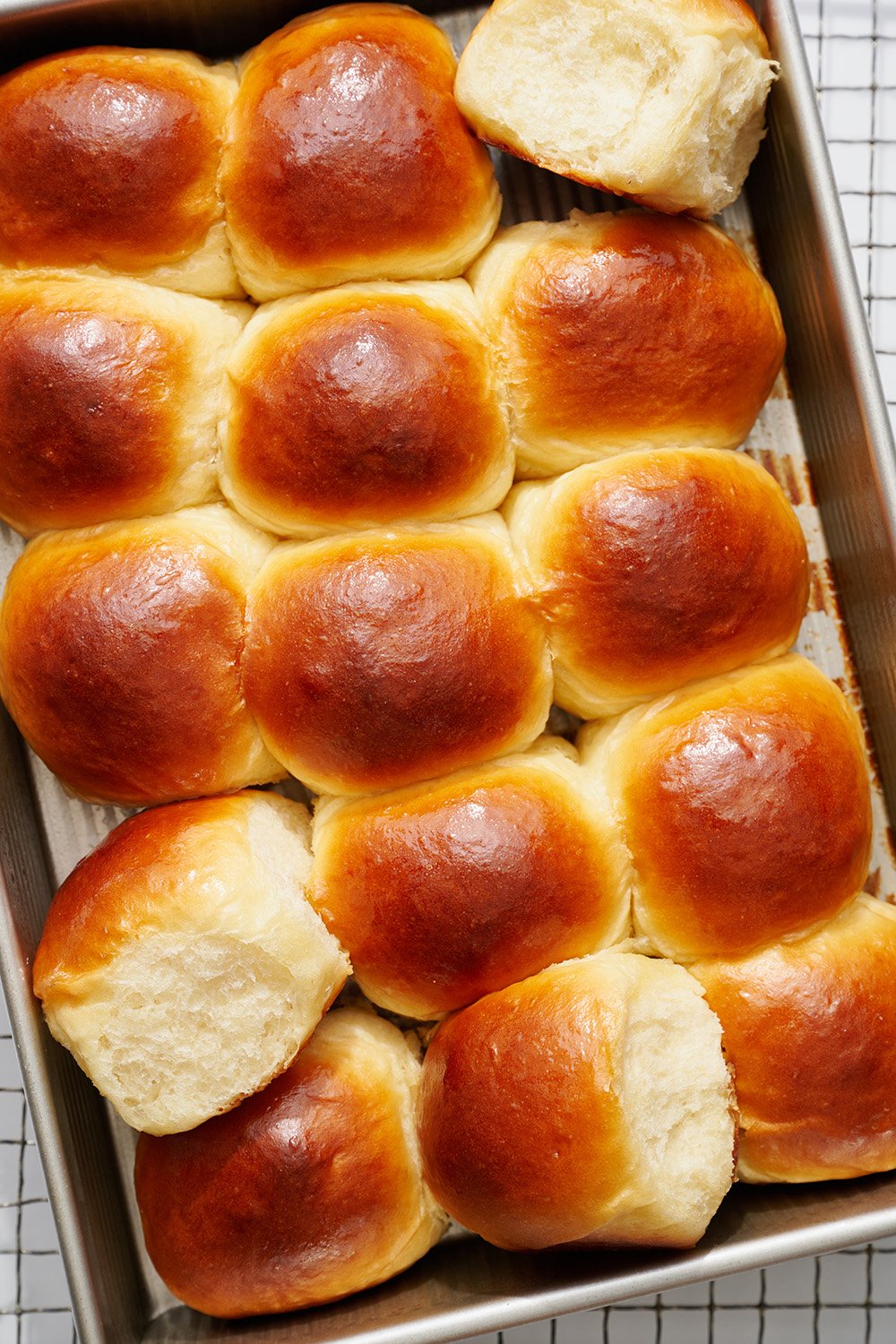
It took over a year to get this copycat recipe perfected. Luckily, we didn’t mind testing these rolls so many times because they’re THAT good.

Free Baking Science Mini-Course!
From cookies that spread to undercooked brownies, this FREE 5-day Baking Science course helps you conquer common baking challenges and make bakery-worthy treats every time.
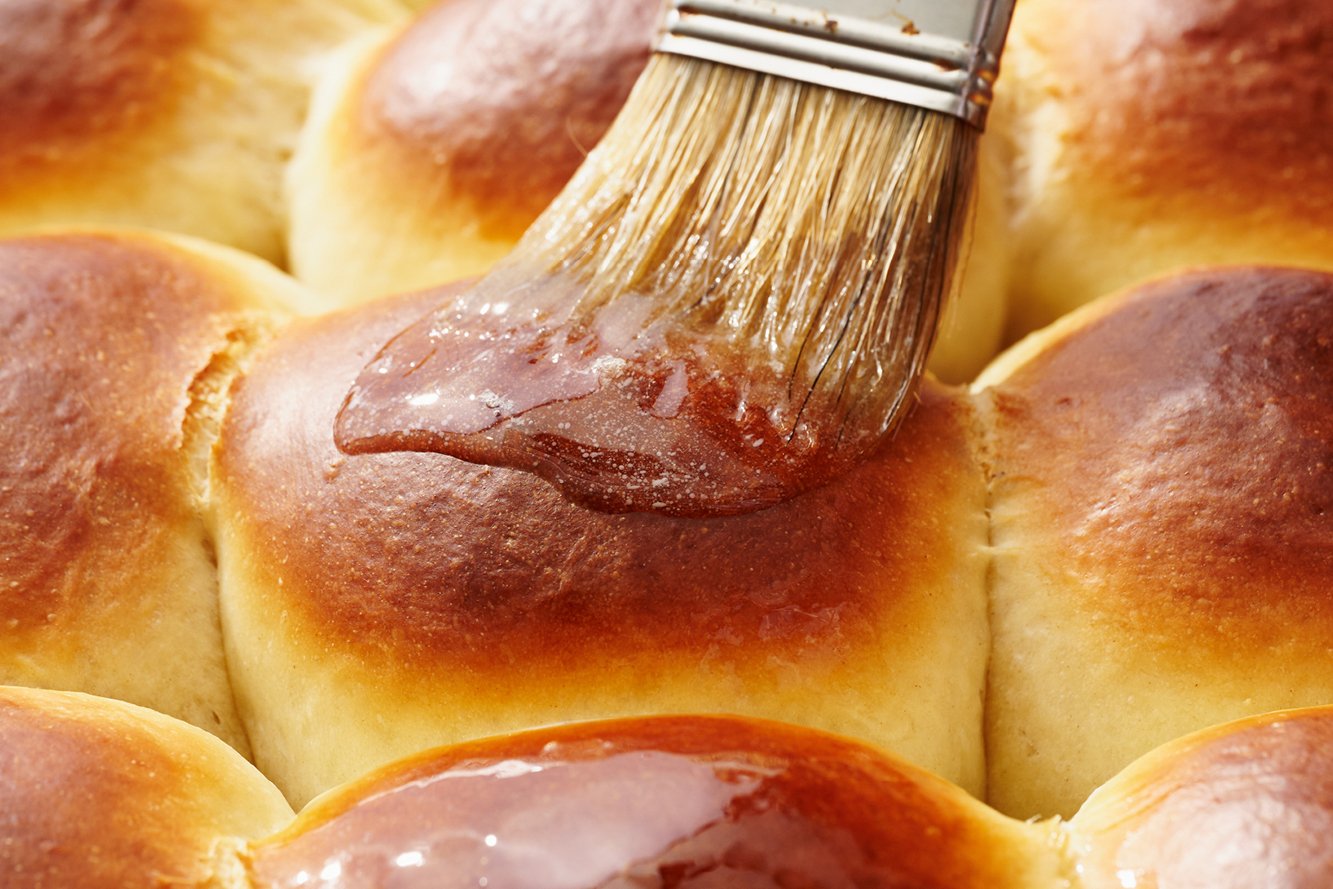
These Homemade Hawaiian Rolls are so versatile. They’re perfect as a side with dinner or as the main course (think ham and cheese sliders!). Take them as a side to a barbecue or cookout. Make little sandwiches with turkey and leftovers after Thanksgiving. Add as a side dish to your traditional Easter dinner. The options are endless!
And bonus: the scent that will waft through your house as these bake is utterly intoxicating.
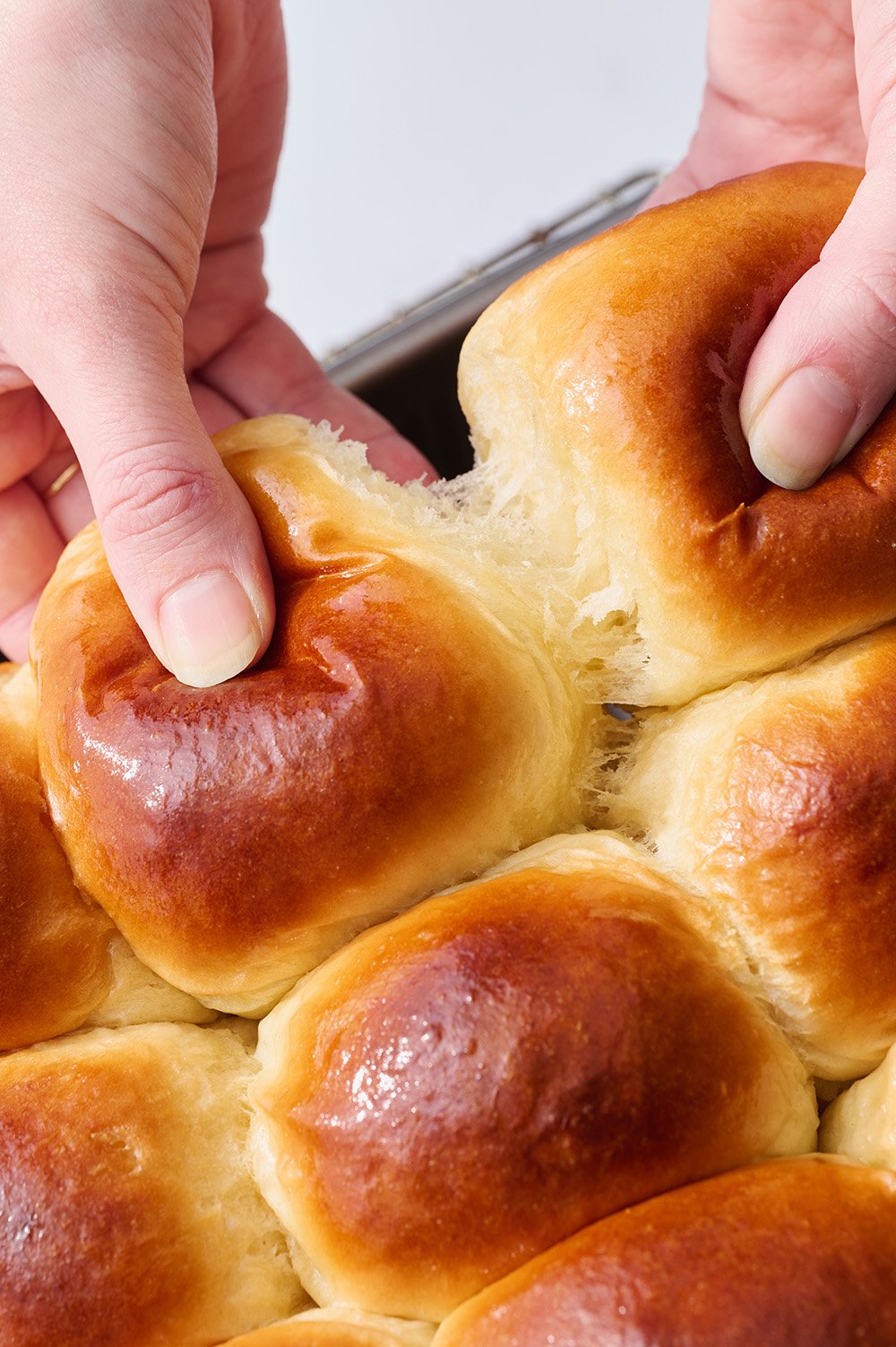
These Hawaiian Rolls are so much better than the prepackaged versions. You’ll never want to buy store-bought again after trying these!
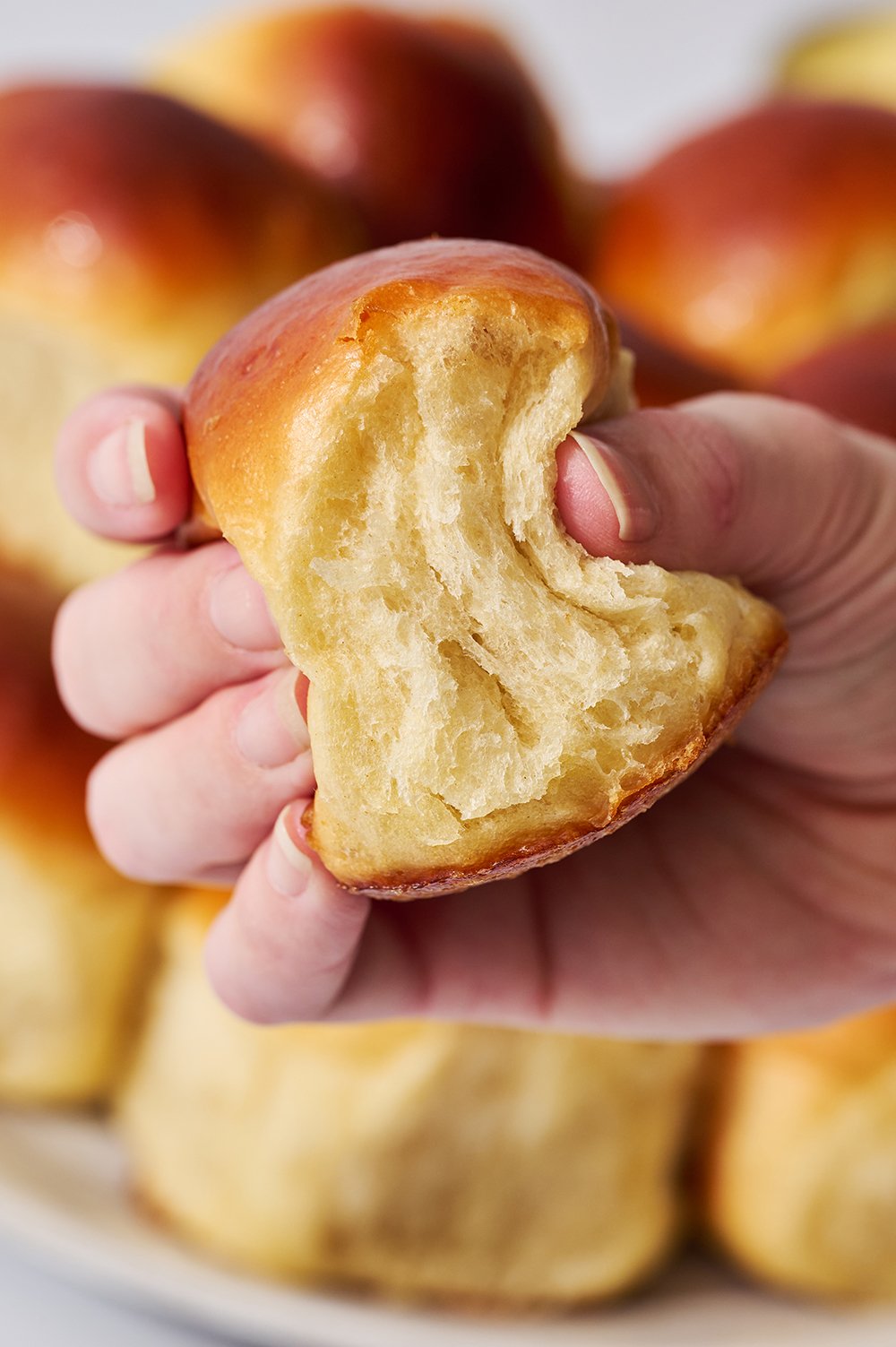
If working with yeast feels a little intimidating, don’t fret. I’ve included a ton of tips and tricks below so even newbie bread bakers can nail this recipe.

Sprinkle of Science
How to Make Homemade Hawaiian Bread Rolls
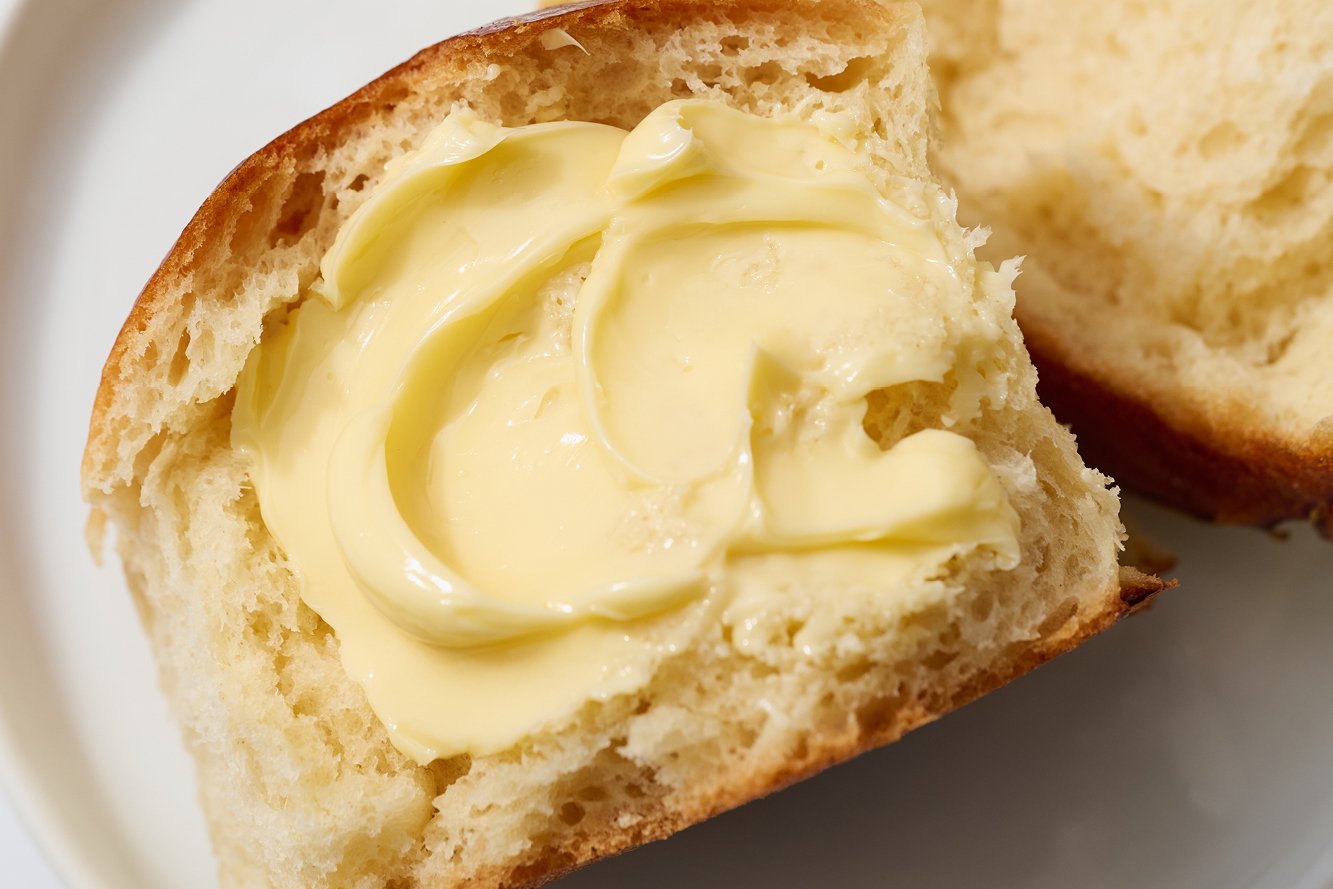
What Are Hawaiian Rolls?
You may have seen Hawaiian Rolls at your local supermarket – but these homemade versions are SO much better! Hawaiian Rolls are distinctly sweet and ridiculously soft and light, perfect for making delicious mini sandwiches, breakfast sandwiches, sliders, and more. Your kids will go crazy for these rolls, too!
Can I Make Homemade Hawaiian Rolls Without a Mixer?
Probably… but it won’t be easy! Your KitchenAid stand mixer does all the hard work in kneading these Homemade Hawaiian Rolls. By hand, it’s going to take a lot of elbow grease, a long time, and give your arms and hands a heck of a workout. Learn how to knead dough by hand here.
How To Make FLUFFY Hawaiian Rolls
Avoid adding too much extra flour to the dough
Since this dough is slightly sticky and enriched with milk, butter, and a lot of sugar, it takes quite a while to come together. These ingredients slow down gluten development. Your instinct might be to add extra flour; however, any extra flour will create a denser, tougher bun instead of the light, fluffy bun we want.
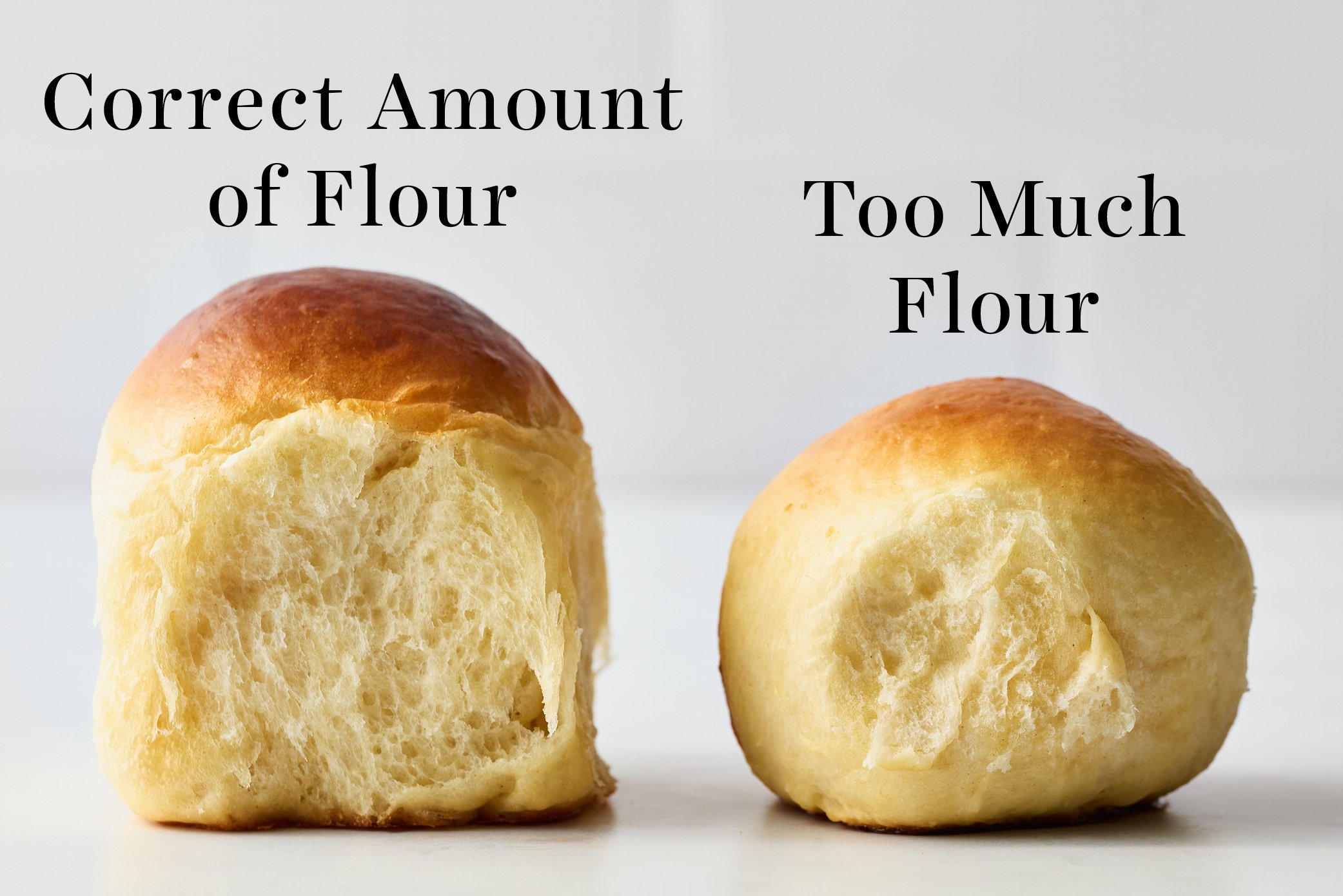
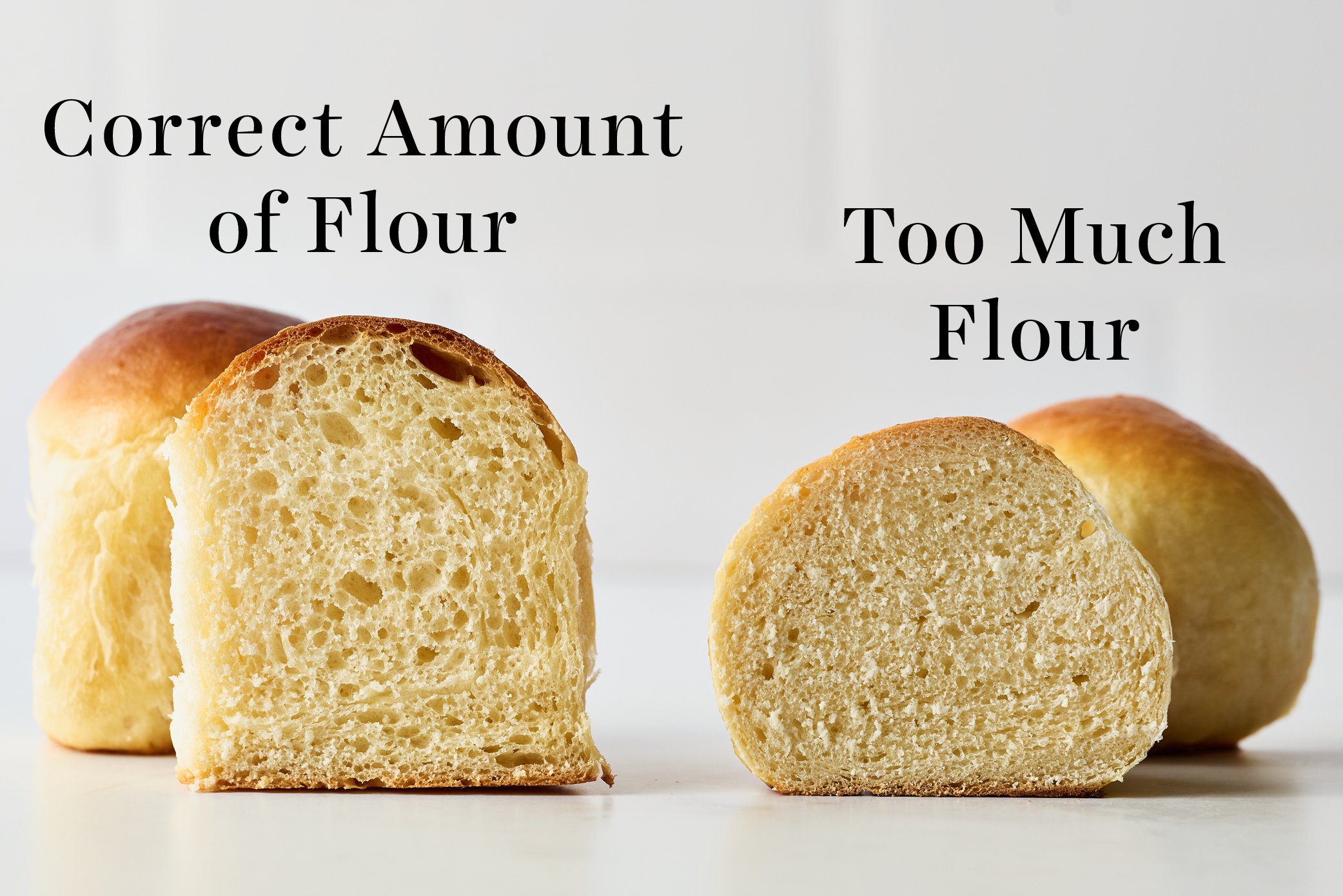
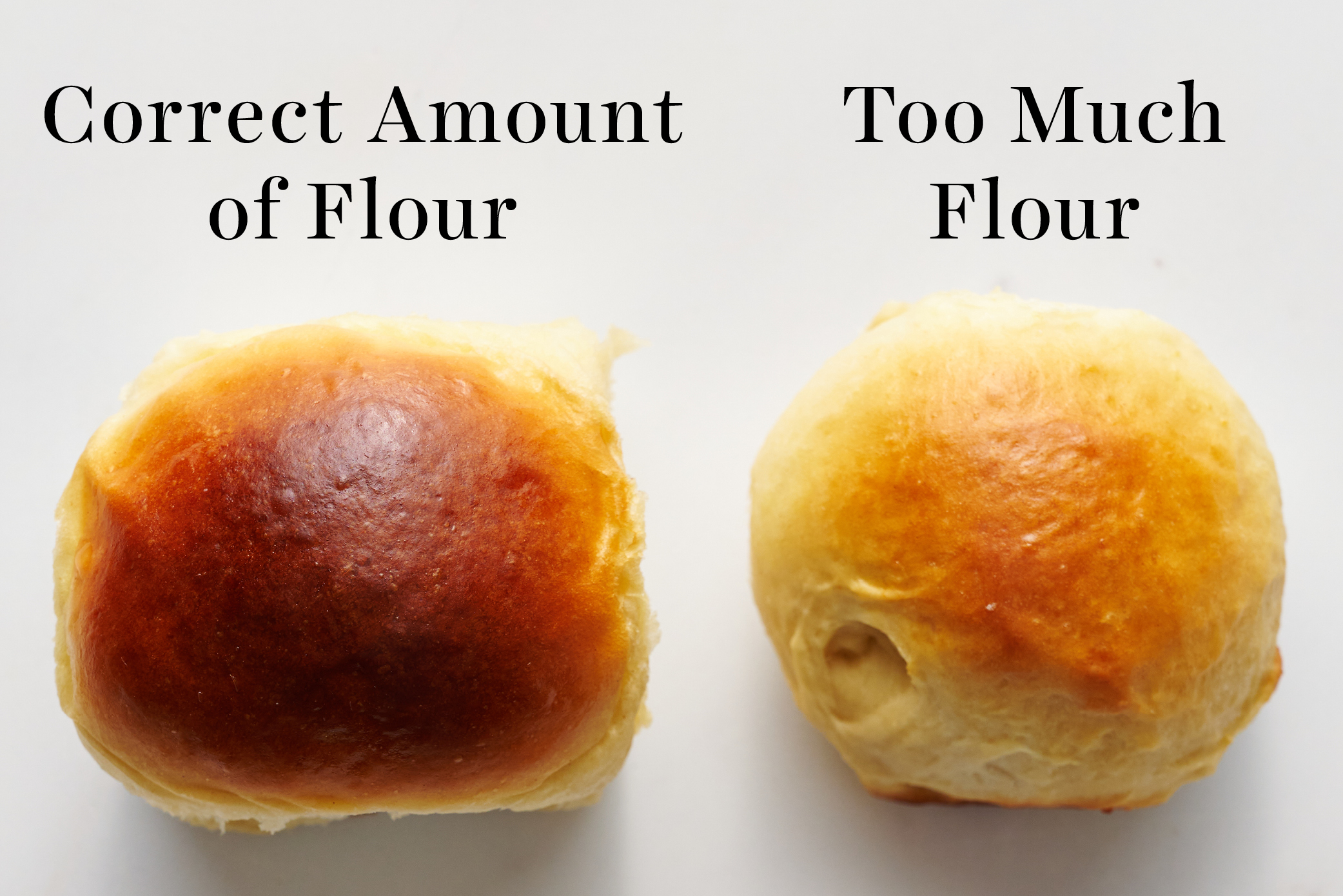
Know your kitchen climate
This recipe was tested in Arizona, Michigan, and New York. During testing, Emily from Team HTH’s kitchen (in Michigan) was about 87% humidity, Kiersten from Team HTH’s kitchen (in New York) was about 65%, whereas our studio kitchen in Arizona was 14% humidity. The more humid your location, the stickier your dough will be. If your kitchen is about 65% humidity or higher, use the higher range of bread flour listed (4 1/2 cups, or 540 grams). Reduce the bread flour if your kitchen is less than 65% humidity. Begin with the lower range listed (4 cups + 1 tablespoon, or 516 grams) and add additional flour by the tablespoon (8 grams) as needed.
It’s better to be slightly sticky than dense
This dough shouldn’t be unbearably sticky, but it will be tacky. Resist the urge to add extra flour, as this will negatively impact the texture of the rolls. The dough will be easier to work with after the first rise!
Proofing Homemade Hawaiian Rolls Sliders
This dough will take some time to proof, especially if your kitchen is cold. The sugars, pineapple juice, eggs, and butter in this recipe add deliciousness but also slow the proofing process.
The first rise will take about 90 minutes, and the second rise will take about 1 hour; however, these times are completely influenced by the temperature of the rising environment.
You can tell if your bread is well-proofed by giving it a gentle poke with your finger or knuckle. Bread dough that has proofed well will spring back slowly when poked and leave an indent. If it snaps back too quickly, it needs more time.
Don’t be tempted to speed up the rise time too drastically, as too much heat will kill the yeast and reduce flavor development.
If you’re lucky enough to have a proofing setting on your oven, you can use that (provided you’ve tested it previously and it doesn’t get too hot!).
Tip: If your kitchen is very cold, turn your oven on and place the bowl nearby, so it gets a little indirect warmth. If your kitchen is very hot, watch the rolls very carefully, as your rise time might be much shorter than specified.
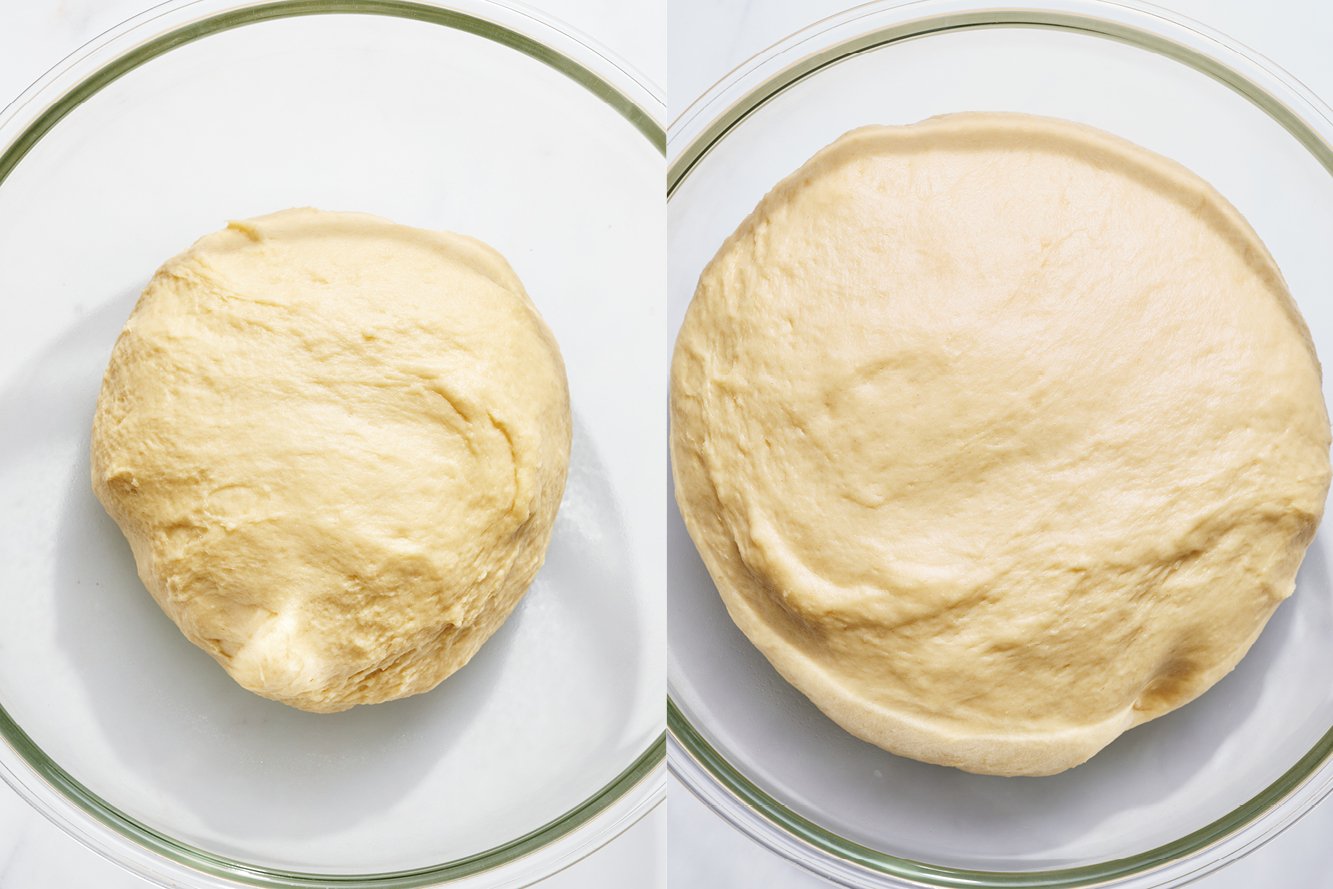
How To Tell If You Have Over-Proofed Your Rolls
This can happen easily if your kitchen is very hot, or if you’re busy and forget to check on the rolls. If your rolls have over-proofed, they will likely deflate while egg washing, or look flat and deflated once baking. Over-proofed rolls may look a little sad, but they should still taste fine.
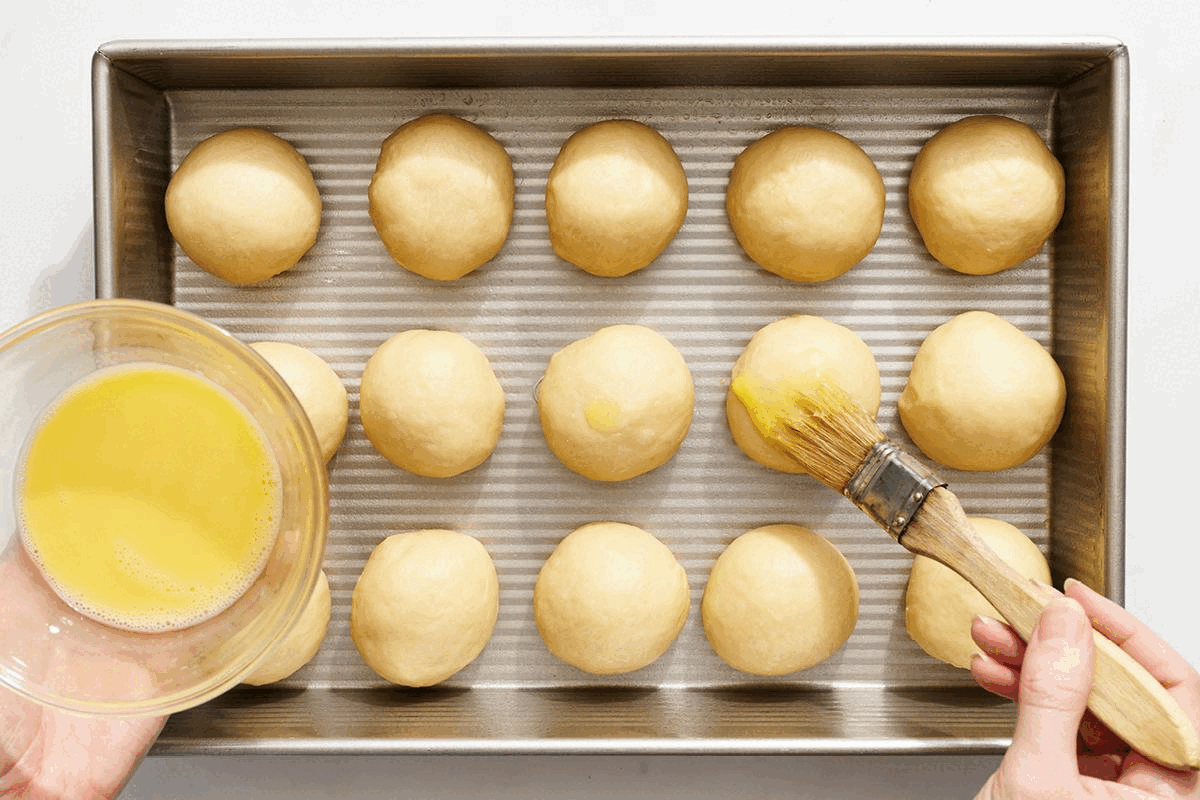
How to Shape Hawaiian Rolls
It’s important to properly shape your bread rolls for beautiful, tall, fluffy rolls.
- Once the dough has risen, press it down to deflate it slightly.
- Place the dough on a clean surface (not a floured surface). Use a bench scraper to section the dough into 15 equal pieces. Don’t worry if they’re not perfectly equal in size. However, if you’re a perfectionist, you can weigh the entire mass of dough, divide that number by 15, then portion each piece perfectly by weight.
- As you’re shaping each piece into a round, make sure to pinch the dough into one central point to create a tight ball. This will help the rolls rise beautifully. Don’t flour your work surface when shaping the rolls because you want some resistance to roll them into taut balls.
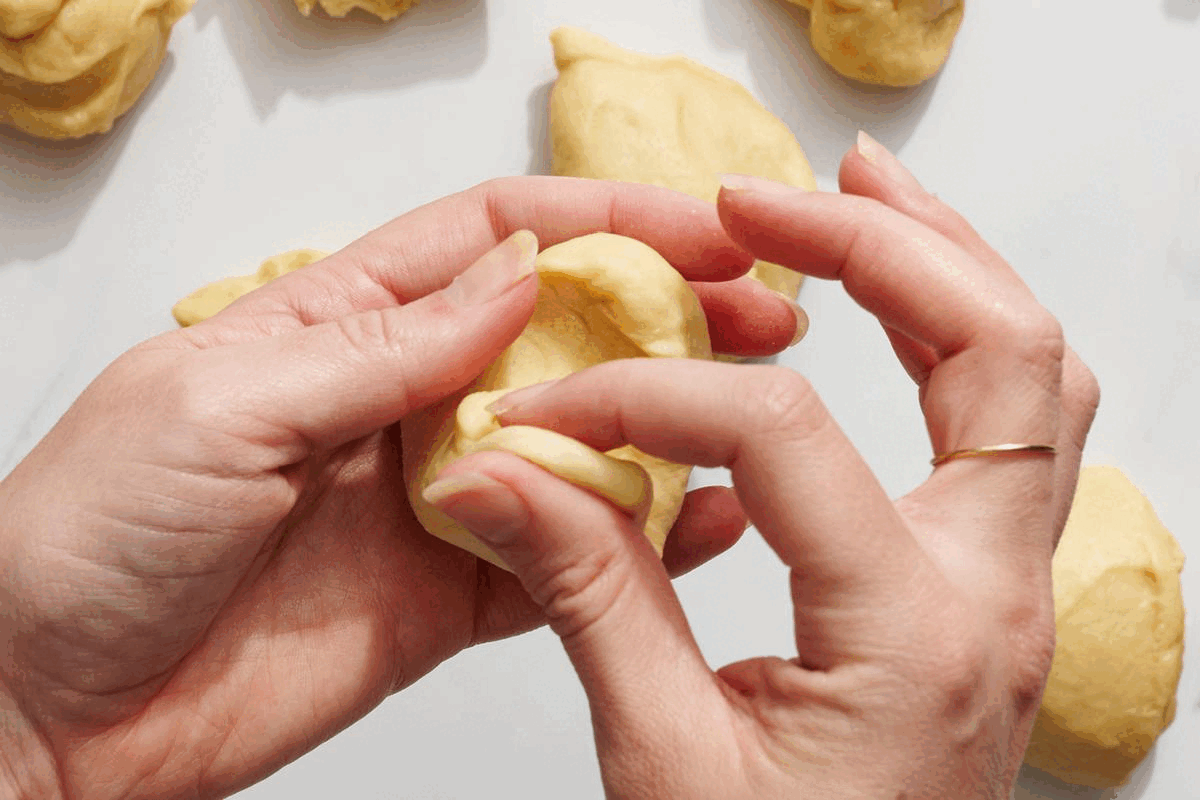
The Best Pan for Baking Rolls
- This is my favorite pan for baking Homemade Hawaiian slider rolls, but any light-colored metal pan will work just fine.
- Avoid dark-colored metal pans, as these can cause excessive browning and dry out the edges.
- If using a glass or ceramic baking pan, you may need to extend the baking time. Learn more about baking in Glass vs. Metal Pans here.
For Those Who Prefer Not-So-Sweet Rolls
These rolls are subtly sweet, but please don’t experiment with reducing the sugar (we’ve tested it!). It’s an essential part of this copycat recipe. The texture will dramatically worsen with a reduction in the sugar. Learn more about sugar’s role in baking here.
If you prefer a less sweet roll, try my Ultimate Dinner Rolls recipe instead.
Do I Have to Use Bread Flour? Can I Use Just All-Purpose Flour Instead?
For best results, I firmly recommend sticking with both bread and all-purpose flour as written. Here’s why:
- Bread flour contains more protein than all-purpose flour, which helps build gluten and aids in giving the rolls structure, height, and a little chewiness. Gluten is the backbone of any bread’s structure, and since we are adding ingredients that prohibit gluten development (pineapple juice, butter, egg, sugar), that additional protein is needed to develop structure.
- When I tested a batch of Homemade Hawaiian Rolls using only all-purpose flour, the rolls were way too dense, noticeably drier, and took significantly longer to knead and rise.
- I also found that making the rolls with only bread flour yielded rolls that were too firm. The addition of a little all-purpose flour balances this out, making the rolls softer.
If you absolutely must use only all-purpose flour, just note that they’ll take much longer to knead, longer to proof, and they won’t be as soft and fluffy.
How Long Do Homemade Hawaiian Rolls Last?
These rolls will keep for 3 days in an airtight container, stored at room temperature. Don’t refrigerate, as it will dry them out faster. Refresh in a 300°F oven for 5 minutes, or pop in the microwave for 15-20 seconds, or until warm, before serving.
Can I Make Homemade Hawaiian Rolls Ahead of Time?
Enriched yeast doughs can have issues rising properly if made ahead. Instead, I recommend freezing the fully baked rolls as directed just below, as these rolls freeze beautifully.
How to Freeze Hawaiian Rolls
Once cooled, place rolls inside an airtight container and freeze for up to 3 months. To thaw, leave at room temperature for a few hours. Reheat in a 400°F oven for 5-10 minutes, or pop in the microwave for 15-20 seconds, until warmed through, if desired.
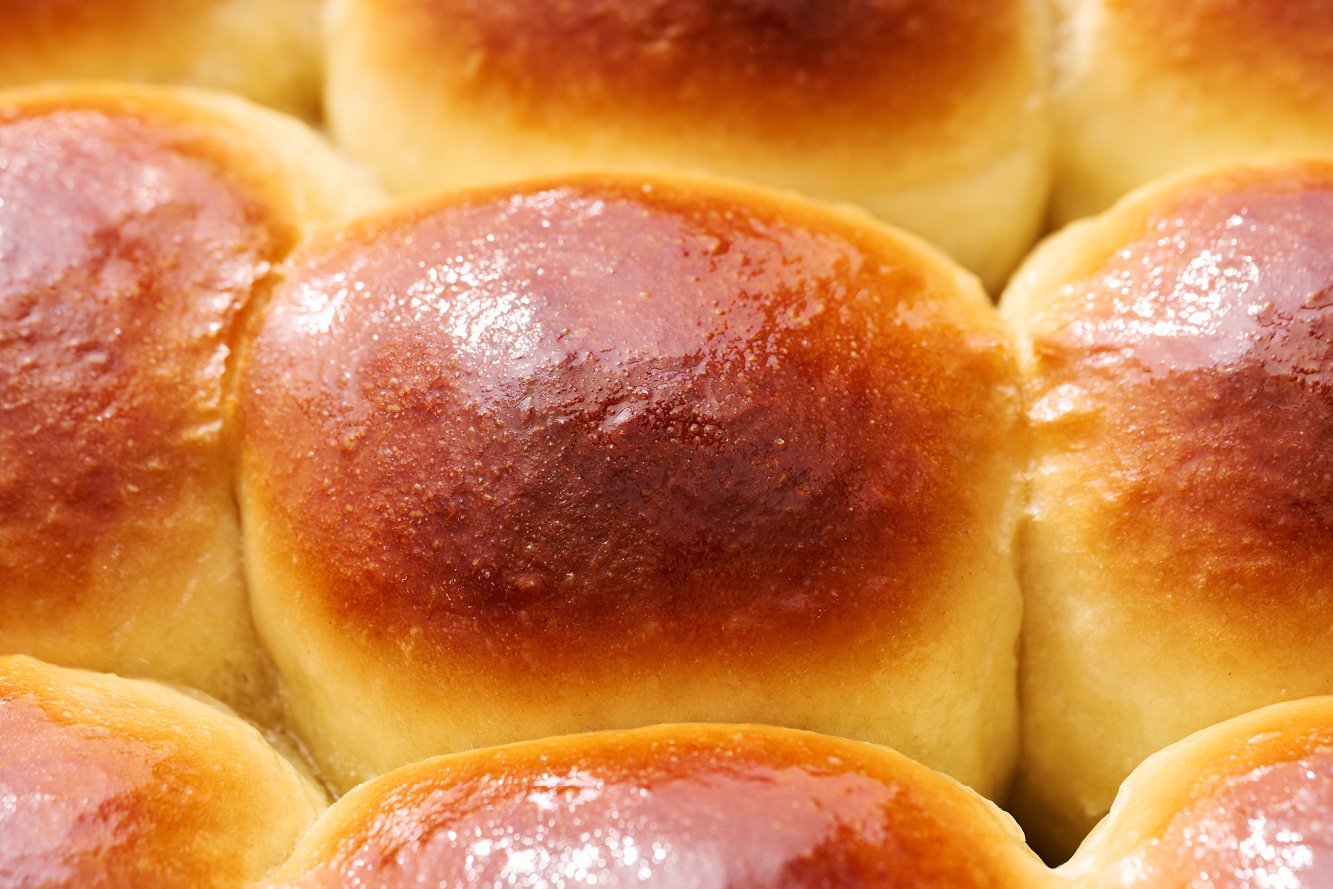
More Bread Recipes You’ll Love:
- Ultimate Dinner Rolls (if you prefer a less sweet roll)
- Garlic Knot Rolls (drenched in garlic butter!)
- Copycat Olive Garden Breadsticks
- Burger Buns
- Focaccia Bread
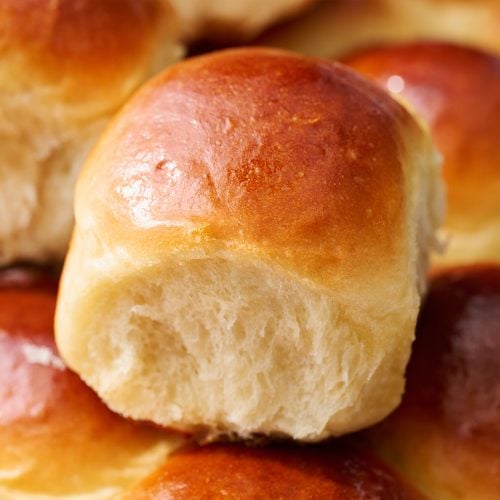
Homemade Hawaiian Rolls
Email This Recipe
Enter your email, and we’ll send it to your inbox.
Ingredients
- ½ cup (116 grams) canned pineapple juice, at room temperature
- ½ cup (116 grams) whole milk, warmed, (100-110°F)
- 5 tablespoons (71 grams) unsalted butter, melted and slightly cooled to just warm (~85°F)
- 6 tablespoons (75 grams) granulated sugar
- 2 tablespoons (25 grams) light brown sugar
- 2 eggs, at room temperature
- 1 teaspoon vanilla extract
- 2 ¼ teaspoons (1 packet)
instant yeast1 - 4 cups + 1 tablespoon (516 grams) – 4 1/4 cups (540 grams) bread flour2, dependent on kitchen climate, see notes
- ¼ cup (32 grams) all-purpose flour
- 1 ½ teaspoons fine salt
For egg wash & finishing:
- 1 egg, lightly beaten
- 2 tablespoons water
- 1 tablespoon (14 grams) salted butter, melted
Instructions
- Combine the pineapple juice, milk, melted butter, sugars, 2 eggs, vanilla, and yeast in the bowl of a stand mixer. Add the all-purpose flour, plus 2 cups (286 grams) of the bread flour, and stir with a wooden spoon until the dough forms a rough, shaggy mass. Stir in the salt. Attach the dough hook to the mixer and turn to medium-low speed. Gradually add the remaining flour JUST until the dough comes together. You may only need some of the flour, depending on your kitchen environment and brand of flour. Continue kneading on medium-high speed for 4 to 5 minutes, until a soft and smooth ball of dough forms.
- Lightly grease or wet your hands and place the dough in a lightly greased medium-sized bowl. Cover with plastic wrap. Let rise until puffy and doubled in size, about 1 ½ hours3.
- Spray a 9×13-inch metal baking pan with cooking spray. Gently deflate the dough. Use a bench scraper or knife to divide the dough into 15 equal pieces. Shape each piece into a ball and place in the prepared pan.
- In a small bowl, combine the remaining egg with 2 tablespoons of water. Brush all over the rolls. Cover with plastic wrap and let rise again until doubled in size, about 1 hour**.
- Meanwhile, preheat the oven to 375°F.
- Bake the rolls for 20 minutes, or until golden brown. Brush with melted butter. Serve warm. Store leftovers in an airtight container for up to 3 days.
Recipe Notes
This post was originally published in 2014 and has been updated with additional tips, recipe improvements, and new photos. Photos by Joanie Simon.
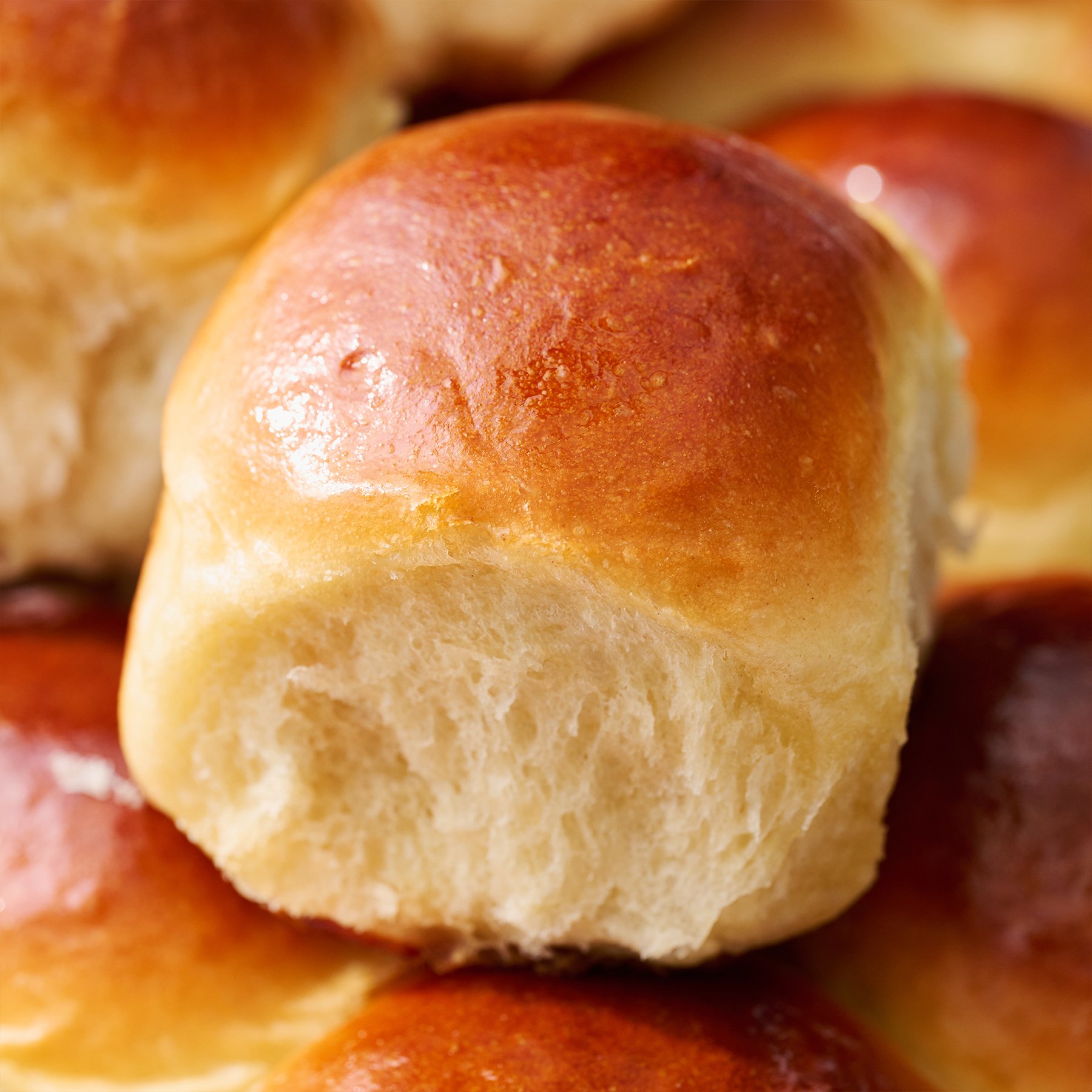
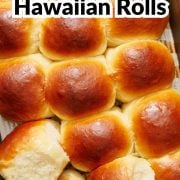
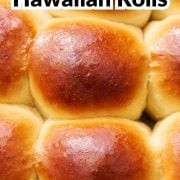

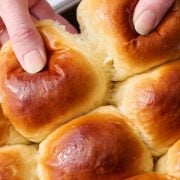
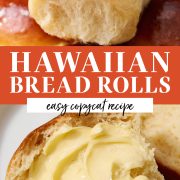
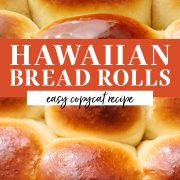
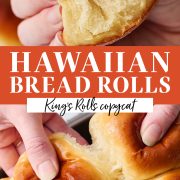
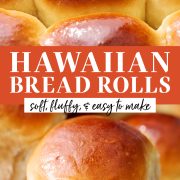
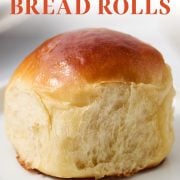
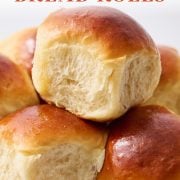
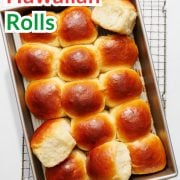
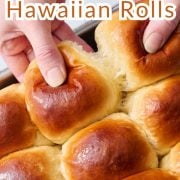
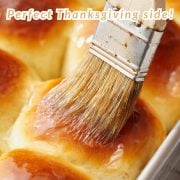

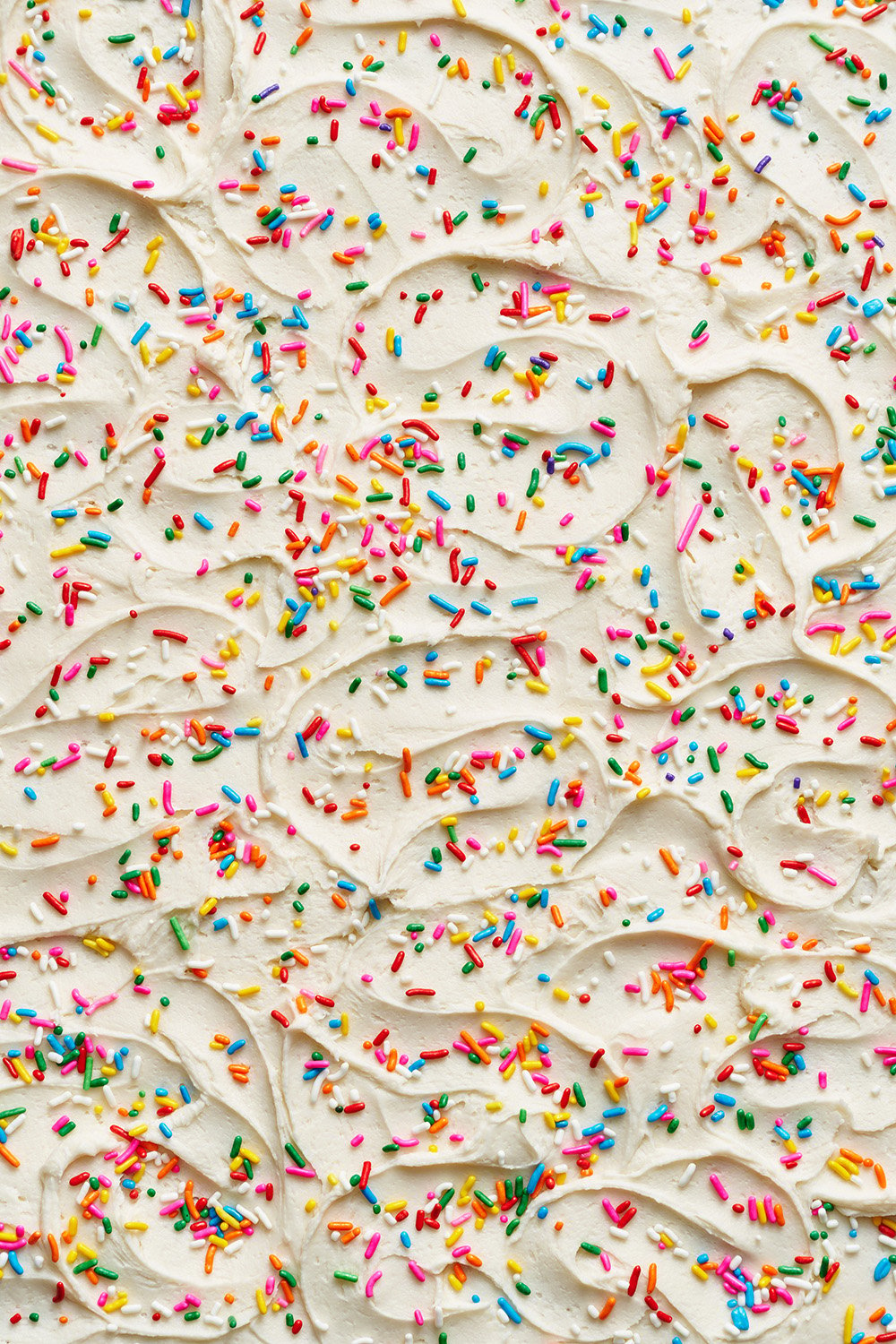



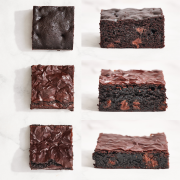
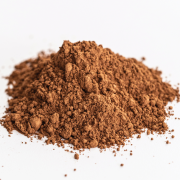
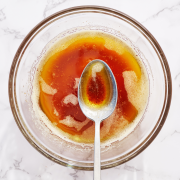
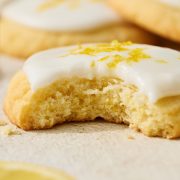
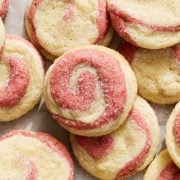
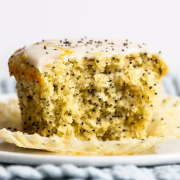
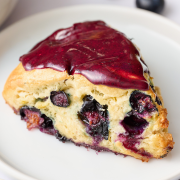








I tried making rolls with the fresh pineapple juice. Agreed the flour just wouldn’t stiffen up and form a ball, no matter how much I added. Does the enzyme in the fresh juice also kill the yeast?
I’ve never used fresh juice for this recipe, only canned. It would appear from other commenters that fresh juice does have a negative effect on the yeast :/
Question, love the Hawaiian rolls but don’t always want a sweet roll for sliders. Could I just use milk in place of pineapple juice so they would not be sweet?
Sure! Let us know how they turn out.
Hello there. Is there any way I can make these into loaves of bread instead of buns?
I’ve never tried so I’m not sure. If you do try let me know how it works out!
This was an absolute wonderful dough to work with, I however only did one thing different, I put all my dry ingredients into the mixing bowl, then made a huge well in the center down to the bottom of the bowl, pulling the dry ingredients up the sides of the bowl, then poured the premixed dry ingredients into the center, then with a wooden spoon quickly pulled all the ingredients together, therefor the wettest in the center, then added the dough hook, and let it knead for 5 min. Perfect dough! This may help the one that said the flour didn’t incorporate into the dough, my Granny taught me that, and it helps with bread dough to incorporate the ingredients evenly.Thank you Tessa and Hope that helps Lola. May the smell of fresh bread fill your house and surround you and your loved ones with warm hugs! ^_^
Thanks for leaving your feedback, Lisa! Glad you enjoyed the recipe. Your Granny sounds like she was a great baker 🙂
I’ve learned so much from from you! As a former teacher, I’d like to give you an A+ on your instructions. Well done!!!!!
Wow, thank you so much! 🙂
Can’t wait to try them!
Wish i would have read these comments before making them. Not sure if using fresh vs canned pineapple juice made the difference but the juice kept destroying the gluten and the dough turned into a soupy, sticky mess. Adding additional flour did not make a difference as after a few minute, my nice, firm ball of dough reverted back to slime. What a waste of ingredients.
If I wanted to reduce the amount of rolls by half, do I just halve the ingredients? Thank you!
I made the dough for these in a bread machine. This is a great recipe ! Light and fluffy so the bread machine did the hard part. are not s sweet as the store brand. I will make these for Thanksgiving!
Great recipe! Im uk based so i had a real struggle converting everything precisely and the mixture was extremely goey. I was concerned so i took a gamble and added more flour to half of the mixture. They both turned out great although the one with more flour was denser. The method is a quite a struggle due to the goey dough but I wouldn’t mind trying it again!!!
Hi Tessa
The recipe look very tasty, but I was wondering if I can convert the butter with something else? We can’t it butter because of cholesterol. Thanks
I haven’t tried using a butter substitute so I can’t say for sure. If you give it a try let us know how they turn out!
My dough is not soft it’s hard and not raising much after 45 mins What did I do wrong?
This is so much better than another recipe I tried from a different site. Your rolls rose twice as fast! The only thing I added was a half tsp. of ground ginger, which was something the other recipe called for that I really liked.
Thank you so much for posting!